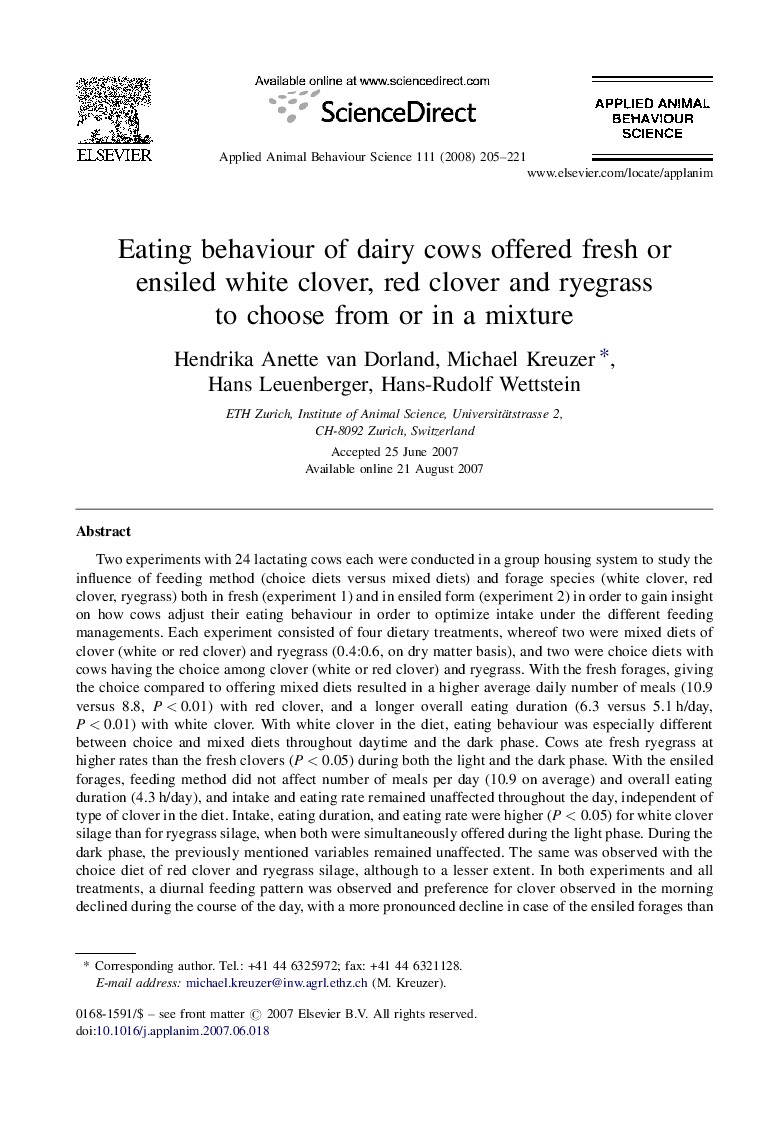| کد مقاله | کد نشریه | سال انتشار | مقاله انگلیسی | نسخه تمام متن |
|---|---|---|---|---|
| 4523761 | 1625422 | 2008 | 17 صفحه PDF | دانلود رایگان |

Two experiments with 24 lactating cows each were conducted in a group housing system to study the influence of feeding method (choice diets versus mixed diets) and forage species (white clover, red clover, ryegrass) both in fresh (experiment 1) and in ensiled form (experiment 2) in order to gain insight on how cows adjust their eating behaviour in order to optimize intake under the different feeding managements. Each experiment consisted of four dietary treatments, whereof two were mixed diets of clover (white or red clover) and ryegrass (0.4:0.6, on dry matter basis), and two were choice diets with cows having the choice among clover (white or red clover) and ryegrass. With the fresh forages, giving the choice compared to offering mixed diets resulted in a higher average daily number of meals (10.9 versus 8.8, P < 0.01) with red clover, and a longer overall eating duration (6.3 versus 5.1 h/day, P < 0.01) with white clover. With white clover in the diet, eating behaviour was especially different between choice and mixed diets throughout daytime and the dark phase. Cows ate fresh ryegrass at higher rates than the fresh clovers (P < 0.05) during both the light and the dark phase. With the ensiled forages, feeding method did not affect number of meals per day (10.9 on average) and overall eating duration (4.3 h/day), and intake and eating rate remained unaffected throughout the day, independent of type of clover in the diet. Intake, eating duration, and eating rate were higher (P < 0.05) for white clover silage than for ryegrass silage, when both were simultaneously offered during the light phase. During the dark phase, the previously mentioned variables remained unaffected. The same was observed with the choice diet of red clover and ryegrass silage, although to a lesser extent. In both experiments and all treatments, a diurnal feeding pattern was observed and preference for clover observed in the morning declined during the course of the day, with a more pronounced decline in case of the ensiled forages than of the fresh forages. The results from this study show that optimization of intake between choice and mixed diets might be realized through adjustments in overall eating duration and/or eating rate, which partially depended on clover type included in the diet, and forage form and, to a lesser extent, on day time.
Journal: Applied Animal Behaviour Science - Volume 111, Issues 3–4, June 2008, Pages 205–221